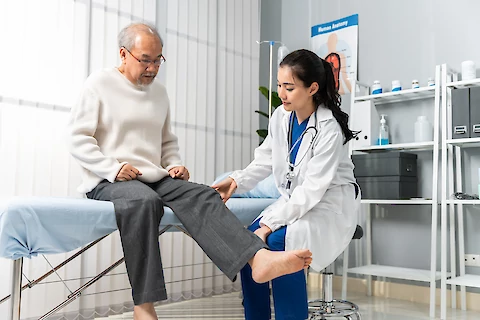
Understanding Peripheral Artery Disease (PAD): Symptoms, Risk Factors, and Treatments
Peripheral Artery Disease (PAD) is a common but serious circulation condition. It can affect all ages and has symptoms that may not always be apparent in its early stages. To help at-risk individuals, it is crucial to understand symptoms, causes, and treatment options. To help those who are at risk better understand this disease, some of its key components such as causes and treatment options will be explored here.
What is Peripheral Artery Disease (PAD)?
PAD is a circulatory condition in which the arteries become narrow. This narrowing of veins and arteries can block off blood flow to parts of your body, such as your legs, arms, stomach, or kidneys. As PAD progresses, it can lead to serious conditions such as gangrene—the death or infection of tissue due to poor circulation—heart attack or stroke. Without proper treatment and management from medical professionals, this could be a potentially life-threatening concern.
PAD is related to coronary and carotid artery disease. Coronary Artery Disease refers to a narrowing or blockage of vessels that bring oxygen-rich blood to the heart muscle. Carotid Artery Disease occurs when plaque builds up in the arteries on each side of your neck and restricts normal blood flow. While plaque build-up is also common with PAD, it affects different parts of the body.
Symptoms of PAD
The most common symptom of PAD is pain in the legs, usually occurring during exercise and typically relieved by resting. Other symptoms can include hair loss on the legs, color changes in the skin, weak pulse in the legs, cold feet, poor nail growth, or cracked nails.
PAD-induced leg pain is most often felt as tightness or fatigue. Color changes in their legs such as discoloration or patches of paleness and blueness can occur due to poor circulation. Weak sensitivity at the end of the toes may also arise.
Risk Factors
Age, smoking, high blood pressure, high cholesterol, diabetes, and a sedentary lifestyle are some of the most common risk factors for developing PAD. People over the age of 50 can be especially vulnerable to PAD due to the slowed heart rate associated with aging. Those with diabetes should take extra precautions since they may already suffer from poor circulation or have higher levels of fat in their bloodstream leading to the hardening of vessels and narrowed arteries.
Treatment Options
The most successful treatment for PAD is a combination of medications, exercise, and lifestyle changes. Medications can be prescribed to help improve circulation. Always consult a physician for guidance on which medical treatments are right for you.
Your doctor may also suggest engaging in regular physical activity such as walking or biking to stimulate blood flow.
Dietary changes are paramount to improving your symptoms, including reducing high cholesterol levels with low-fat diets. Generally speaking, you should avoid smoking and alcohol consumption altogether.
Lastly, if these treatments don't work surgery may be recommended – such as an angioplasty. Again, your physician should provide guidance on the best treatment methods and will advise on any necessary next steps.
Senior Helpers Provides Personalized In-Home Care
At Senior Helpers, we understand how living with PAD can affect a person's physical and mental health. That is why our team of caregivers is ready to help seniors living with PAD by providing in-home assistance reminders to take medication or helping with daily activities. We don't just provide the basics but also strive to make sure that your loved one has access to quality care tailored to their specific needs. Contact us today for more information about how we can help you manage PAD in West Palm Beach, Jupiter, Belle Glade, Lake Worth, and Palm Beach County!